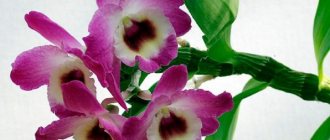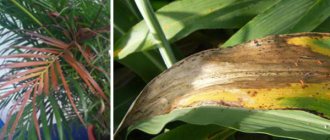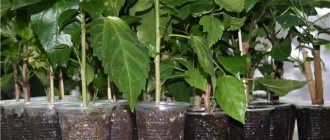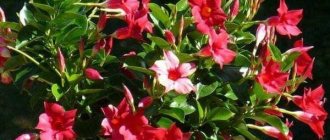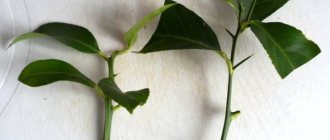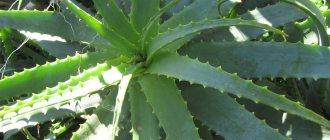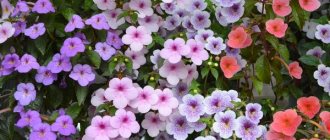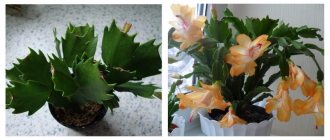Feijoa is an exotic fruit native to South America. However, it can be grown without much difficulty in other countries and climatic conditions. The fruit tree also grows in the Caucasus, Turkmenistan, Crimea, and Azerbaijan. But even in colder regions it is possible to acquire a feijoa and perceive it no longer as exotic, but as a houseplant. It is enough to know the basic rules of care and maintenance, as well as the specific details of planting, watering and cultivating the plant, which is otherwise called Akka Sellova.
Growing feijoa at home
Flower lovers appreciate feijoa for its ideal combination of unpretentiousness and interesting appearance. An ornamental plant does not require complex care, but it must be regular. It is best to keep Sellov's acca in a greenhouse or winter garden. But if this is not possible or the owner wants to use feijoa exclusively as a houseplant to bring exoticism into the apartment, then this will also not cause any serious difficulties. The main thing to remember is to maintain the correct temperature regime, water the crop on time and in the correct proportions, and regularly inspect feijoas for parasite infestation, so that if they are detected, you can immediately take appropriate measures.
Conditions for growing a tropical plant at home
The main attention should be paid to the selection and preparation of the soil. The owner of the plant can easily prepare it on his own, without the help of gardeners or florists. Composition for soil under feijoa:
- leaf soil;
- turf;
- humus;
- peat;
- coarse river sand.
Everything must be thoroughly mixed and disinfected. If you don’t have the time or desire to mix the substrate yourself, you can buy ready-made soil. Suitable soil for azaleas. It can be found at any flower or garden store. Before filling the soil into a pot selected for the plant, you need to place expanded clay on its bottom. It will serve as drainage. The product can also be purchased at gardening and flower shops.
Lighting
Feijoa loves light, so it needs to be placed in a place that is well and constantly lit. In other words, the owner should choose window sills facing south. But it is important to remember that acca Sellova does not tolerate direct sunlight. If you do not control this moment, it will receive multiple burns and, as a result, will most likely die. If the area chosen for the plant is completely open to the sun, you must definitely think about how to shade it. You can stretch a fabric canopy or build it from scrap materials (glass, wooden boards, etc.). If the apartment windows face north, you will need to buy a fluorescent lamp. It compensates the feijoa for the lack of natural light, and the plant will feel comfortable.
Comfortable temperature conditions
Feijoa is a hardy crop because it is a cultivated fruit tree. Thanks to this, it perfectly adapts to different climatic conditions. But it’s still better to follow the recommendations of gardeners and not experiment with the regime. First of all, temperature fluctuations affect the ability of Sellova's acca to bear fruit. Optimal temperatures for feijoa:
- +18-20 degrees – summer period;
- +10-14 degrees – for the wintering period (short cold spells are allowed).
Wintering is an important period in the life cycle of a plant. This is a time of rest, so it is extremely important to observe the specified temperature regime and avoid its sudden jumps and changes.
The maximum temperature threshold is approximately 23 degrees Celsius. It is not recommended to keep Akka Sellova in hotter conditions. Otherwise, it will lose its decorative effect, will grow more slowly, and the occurrence of diseases is possible. But if the summer turns out to be hot, there is no need to worry. You just need to pay more attention to the well-being of the feijoa, water it regularly and prevent direct sunlight from falling on the foliage. Then the culture will delight its owner with excellent appearance and health. Also in summer it is worth taking the plant out onto the balcony or even outside if it is kept in the country. But you always need to remember about the shadow, or at least its arrangement.
Botanical description
This plant in the form of a shrub or tall tree reaches 4 m. It belongs to the Myrtaceae family of the Feijoa genus. An evergreen plant with dense green leaves. The direction is opposite, sinewy dissection. They are covered with thin wax on top and have gray pubescence on the reverse side. The branches are covered with gray-brown bark.
Feijoa blooms for a long time, about 20 days. White flowers are formed, which change color to crimson towards the center. The core contains stamens, more than 70 pieces. Pollination by insects is necessary for the formation of ovaries.
The fruits are medium-sized green juicy berries. There are seeds inside them. The taste is reminiscent of pineapple, strawberry or kiwi. Inside the pulp is translucent, jelly-like. The outside has a lumpy green peel.
Soil type
The plant will take root in any soil; there are no special requirements. But there are tips and recommendations based on the experience of numerous gardeners. As mentioned above, you can prepare the soil yourself or buy a ready-made substrate - here everyone decides individually what to do. River sand, leaf humus and turf have a beneficial effect on the health of feijoa. You can also add peat to make the soil more nutritious.
Feijoa care
The culture is undemanding. Key points for the owner to remember:
- buy soil for azaleas or prepare a substrate using river sand, turf and leaf soil;
- protect the plant from direct sunlight;
- monitor the temperature so that its readings do not rise above +23 degrees and do not fall below +10 degrees;
- water regularly;
- Before winter, trim the crown (about 40%).
If the goal is to obtain fruits and harvest, the owner needs to pollinate the flowers (if the variety is not self-pollinating).
Watering and air humidity
The optimal humidity level in the room where feijoa is kept is 80-85%. In winter or during drought, the air should be additionally humidified. A simple spray bottle will help the plant owner cope with this task. As for watering, it should be frequent and plentiful. Akka Sellova loves water very much and quickly absorbs it. It is especially important to control watering in spring and summer, when the air temperature rises and feijoas drink more. In winter, on the contrary, you need to water the tree less often. Excess moisture will cause rotting of the roots and, as a result, the death of the feijoa. For irrigation, you can use both running water and softer rainwater. If a lot of excess water has accumulated in the tray of the pot, it must be drained so that the plant does not rot.
Diseases, pests and proper control of them
Despite its exoticism and fastidiousness, feijoa rarely becomes infected with serious garden diseases. But sometimes, in unusual conditions, a fruit tree looks sluggish and may develop gray rot or spotting on the leaves.
Fungal pathogens are destroyed using Bordeaux mixture, which is also good for seasonal, preventive treatment. When rot is detected, the affected areas are carefully cut out, capturing several centimeters of healthy tissue, after which they are immediately treated with strong dual-action fungicides. The appearance of such diseases indicates the need to review the watering regime - it needs to either be increased or the water changed.
Of the pests, spider mites and false scale insects show the greatest interest in feijoas. Most often they appear on young leaves and shoots. They get rid of them using powerful insecticides such as Keltan. Two to three grams of the drug are diluted in 1 liter of warm water and the entire plant is treated with the resulting solution in the evening. In order to prevent ticks, the green part of the tree is periodically sprayed with cold water, for which a shower or watering hose is used.
Scale insects appear on the upper side of the leaves. An effective remedy against them is a solution of Karbofos (5-7 g per liter of liquid). The resulting emulsion is used to treat both sides of the leaf plate and plant shoots 2-3 times at intervals of 5-7 days.
Top dressing
Feijoa needs regular fertilizing and soil fertilization. But here it is important to remember a couple of nuances:
- you cannot combine fertilizing with watering - this will cause root burn;
- fertilizers must be introduced in stages, dividing the fertilizing into components - an integrated approach will not be so effective;
- procedures should be alternated at intervals of 2-3 weeks.
The main components of feeding are phosphorus, nitrogen and potassium.
Examples of fertilizers:
- Nitrogen – bird droppings with a concentration of 1:15 or mullein with a concentration of 1:10.
- Phosphorus – superphosphate. 1 teaspoon dissolved in a liter of boiling water is enough. After the liquid has cooled, you need to add another liter of boiled water and fertilize the feijoa with the resulting mixture.
- Potash - wood ash. Feeding recipe: mix a tablespoon of ash with a liter of water, leave for a week.
These simple rules will help you feed the plant profitably.
Properties of feijoa - harm and benefit
Beneficial features
In addition to the pleasant taste and aroma, feijoa fruits have properties beneficial to human health. They contain iodine, zinc, manganese, copper, iron, phosphorus, magnesium, potassium, calcium, sodium, malic and folic acids, essential oils with strawberry and pineapple aroma, vitamins C, PP, B1, B2, B3, B5, B6 , as well as easily digestible fats and proteins. There is more iodine in feijoa fruits than in seafood, and the berries of trees growing near the sea are especially rich in this element: 100 g of fruit contains up to 35 mg of iodine, with the daily requirement for humans being 0.15 mg.
- What to do if your cat eats flowers
It is recommended to consume feijoa fruits for vitamin deficiency, atherosclerosis, colds, sluggish intestinal motility, diseases of the digestive system, gout, Graves' disease, constipation and pyelonephritis. Feijoa lowers cholesterol and increases hemoglobin, improves blood composition and memory.
Feijoa fruits are also used externally: masks made from their pulp rejuvenate and nourish the skin, soothe inflamed areas: 1/3 of the crushed fruit is mixed with yolk, two tablespoons of cottage cheese and one tablespoon of olive oil; The mixture is applied to the face and neck and washed off after 20 minutes.
Contraindications
Due to the high sugar content, feijoa berries are contraindicated for people with diabetes and overweight. They are also not suitable for those who have an individual intolerance to the product. It is undesirable to eat feijoa fruits if you have hyperthyroidism. Overeating feijoa fruits is also dangerous, after which a feeling of anxiety, temperature changes, rapid heartbeat and even nervous breakdowns may occur. And in some cases, an overdose, on the contrary, leads to decreased performance and a depressed state.
Avoid combining feijoa with cow's milk. When feeding fruits to children, observe moderation. Do not eat fruits that have been stored for longer than a week.
Transplantation and substrate
While the plant is young and growing quickly, the owner will need to replant it every year. The transplant must be carried out very carefully. Feijoa branches are quite fragile, so you should try to reduce contact between the plant and your hands to a minimum. There is no need to completely clear the roots from the soil, as they are also easy to damage.
For the first 2-3 years, a mixture of sand and peat is used for replanting. Then, when the tree grows, you can reduce the number of transplants to once every 3 years. The mixture changes slightly:
- sand;
- turf;
- humus.
Everything is mixed in equal proportions. You can also add bone meal or horn shavings. It is advisable to check the acidity of the soil. Optimal values are 5.0-7.0 pH. Before filling the soil, a drainage layer is placed on the bottom of the pot. It is important to note that the new pot should be approximately 10 centimeters larger than the previous one. Clay containers or wooden tubs work best. You should not give preference to metal pots. They, of course, are cheaper, but they tend to oxidize under the influence of the substrate. Such a chemical reaction will negatively affect the health of the plant.
How to care for an exotic plant
When optimal conditions are created, feijoa is grown as a houseplant. An important role is played by the choice of location, organization of watering and fertilizing, and timely replanting.
Appropriate place
The plant prefers constant, indirect sunlight. When placing the pot on the south side, shading should be done in the afternoon. A sheet of paper or a dark grid is suitable for this. When placing a feijoa in the north, it is additionally illuminated using special phytolamps.
Important! In winter, you need to create additional lighting to prevent leaf fall.
Air temperature and humidity
Although the plant is tropical, it copes quite well with sub-zero temperatures. In summer, it is recommended to take the plant outside or to an open balcony. In the winter and spring season, it is necessary to ensure a temperature in the range of 12 – 20 °C.
Air humidity is maintained at 80%. To do this, spray the bush daily with water from a spray bottle. Proper watering and maintenance in suitable conditions will help to obtain a harvest and abundant flowering.
Required soil composition
Feijoa is unpretentious in choosing soil. For planting, you can purchase a ready-made composition in the store marked “For flowering plants.” It is also prepared with your own hands. To do this, mix:
- leaf soil 1 part;
- turf 1 part;
- humus or compost 1 part;
- peat;
- river sand.
All components are mixed. Then place on a baking sheet and bake in the oven at 150 °C for 20 minutes. This is necessary to disinfect the composition from harmful bacteria.
Important! Pebbles are placed at the bottom of the pot to create drainage.
Fertilizers
Plant nutrition is especially important during the flowering and growth period. Feijoa is fed with organic or mineral fertilizers every 2 weeks. Before applying fertilizing, the bush is watered abundantly. He learns well:
- superphosphate;
- potassium salt;
- nitrogen fertilizers;
- mullein solution 1%;
- wood ash.
All compositions are added one by one. They should not be mixed so as not to create additional stress on the plant.
Watering rules
In the hot season, feijoas are watered abundantly. Place the pot in a deep bowl to drain excess water. There is no need to drain it; the plant will gradually absorb it into the soil. Make sure the soil dries out and only then irrigate it.
Too much liquid promotes infection and the development of root rot.
In winter, a dormant period begins, so watering is sharply reduced. Moisten the bush as the soil dries out. Pre-prepared water is used for procedures. It is left to stand for several days or filtered.
Transfer
In the first three years of life, a young tree is replanted every season in May or April. The size of the pot is increased by 8-10 cm in diameter. A ceramic or clay container is suitable for it.
Adult feijoas are replanted once every three years. You should not deepen the roots too much, as this disrupts the normal development of the crop.
Feijoas are transplanted by transferring them from one pot to another. At the same time, make sure that the earthen lump is not damaged during transfer. If disease or rot is detected, the soil is cleared from the roots, damaged areas are removed, treated with manganese, and only then replanted.
Pruning and crown formation
The formation of the crown of a young tree begins after reaching 15-20 cm in height. Pinch out the main shoot. He gives 2 new ones, they are also cut off. From them 2 more are formed, they are also removed. The procedure is carried out over 3-4 years. This will help keep the tree compact in size.
See also
The benefits and harms of apricots for the human body, properties and contraindications
Read
When feijoa begins to bloom, crown formation is stopped. Monitor the condition of the branches, remove diseased, dry and old ones.
Important! If you do not prune, feijoa grows to a height of a meter or more.
Pollination
To obtain feijoa ovaries, pollination is required. It can be obtained by keeping the plant in the fresh air. Pollination occurs when a tree comes into contact with pollinating insects. It is almost impossible to get a harvest at home.
Diseases and pests, combating them
If the culture is not maintained correctly, immunity decreases, infection with fungal diseases and damage by harmful insects occurs. Among the diseases noted:
- powdery mildew;
- rust;
- gray rot.
To get rid of diseases, the feijoa bush is sprayed with fungicidal preparations. The plant is affected by the following harmful insects:
- mealybug;
- red spider mite;
- false scale insect.
To combat them, feijoa foliage is sprayed with insecticides for tree crops. Insects die in 2-3 days. If necessary, repeat the treatment.
How to propagate by seeds
Feijoa can be propagated in different ways, but seed propagation is the easiest option. The seeds are taken out from the ripened fruits, washed and laid out to dry. Then follow this algorithm:
- Prepare containers.
- Fill them with river sand substrate.
- Place the seeds so that the sand covers them by 4-5 millimeters.
- Cover the bowls with glass or cover with film. This is necessary to regulate the humidity regime.
- Provide the seeds with warmth (+20-25 degrees) and ensure that they receive a sufficient amount of natural or artificial light.
Sowing is best done in the spring. Akka Sellova seedlings will germinate approximately 3-4 weeks after planting the seeds.
Seed propagation of Feijoa
Propagation by seeds
- the most popular way. Feijoa seeds are very small: 1 kg contains up to 650 thousand. To obtain seeds, take ripe fruits of the best quality, cut them lengthwise into two halves and scoop out the jelly-like mass with the seeds with a spoon, which is left to ferment for 3-5 days. Then the seeds are separated from the pulp, washed in a weak solution of potassium permanganate and dried at a temperature of about 20°C. Before sowing, seeds can be stored in a cool, dry place at a temperature not exceeding 5°C. Feijoa seeds are sown in January-March in a low box filled with a mixture of turf soil, high-moor peat and sand (2:2:1). Before sowing the seeds, the soil can be steamed well, when it dries, lightly compacted and watered. Seeds are sown in grooves no more than 0.5 cm deep at a distance of about 5 cm from each other, sprinkled with soil and a little river sand (this will protect the seedlings from blackleg). The crops are watered from a watering can with a fine strainer, moistening the filter paper laid on the soil surface. The box is covered with glass, which is turned over daily. The box is placed on a bright windowsill, the air temperature is 20-25°C, then seedlings will appear within 3 weeks. Shoots appear faster with daily spraying of the soil surface.
When the first shoots appear
the glass is removed. In the same year, the plants are replanted twice. The first time is replanted with pruning of part of the root system, when the seedlings grow to 5 cm and have 2-4 pairs of leaves. The second time they are transplanted into small pots (9 cm in diameter), the composition of the soil mixture is in the ratio (in parts): turf - 1, humus - 1 and sand - 1. These are the recommendations of the famous exotic plant breeder A.V. Patiya.
Crown formation
Feijoas should be pruned in early spring. Young shoots are removed, cutting off about a third of their length, so that a beautiful and neat crown is subsequently formed. The root shoots are also removed. After some time, branches from the sides begin to grow quickly. It is on them that the fruits will then ripen if the tree is self-pollinating, or if the owner takes care of pollination. Then, in the next pruning, you need to cut off old and dry branches. And, if necessary, trim the crown to preserve its original appearance.
Harvesting
At home, only those varieties of feijoa bear fruit that pollinate themselves. This must be taken into account when purchasing if the owner wants to get a harvest from growing the plant. Or you need to try hand pollination. This is done with a soft brush or cotton wool. You should also know that Sellova acca will begin to bear fruit at least four to five years after planting. The taste, size and appearance of the fruit will depend on:
- feijoa varieties;
- correctness of care;
- the climate in which the tree was grown;
- the amount of light the tree receives;
- fertilizers used.
The first fruits should be tasted with caution. There is a risk that the owner of a feijoa will pick an unripe fruit and be poisoned by it. Of course, this is not fatal, but unpleasant sensations with characteristic symptoms will appear. Also, feijoa should be tried with caution by allergy sufferers and people diagnosed with diabetes. It is better to first consult with your doctor on this issue. Feijoa will benefit everyone else, and its sweet exotic taste will be an excellent reward for proper care and growing the plant at home!
Article Rating
Benefit for health
Feijoa growing at home
Feijoa has many properties that are beneficial to health. Regular consumption of fruits helps improve your condition, reduce vitamin deficiency in winter and prevent various diseases.
- Low calorie fruit: 100g of fresh fruit contains only 55 calories. However, they are low-fat, cholesterol-free fruits filled with vitamins and antioxidants that ensure a healthy body and resistance to various diseases.
- The fruit is a very rich source of soluble dietary fiber (6.4 g per 100 g fruit, about 17% of DRA), making it a good laxative. The fiber content helps protect the colon lining by reducing exposure time to toxins as well as binding chemicals that cause cancer in the colon.
- Feijoa is an excellent source of antioxidant vitamin C: 100g of fresh fruit provides 32.9mg of this vitamin, about 55% of the DRI (daily intake). Vitamin C is a water-soluble antioxidant that is good in the fight against viral diseases with the help of immunomodulatory agents. Regular consumption of fruits rich in vitamin C helps the body resist viral infections and prevent cancer by removing harmful free radicals from the body.
- Feijoa contains small amounts of B vitamins such as pantothenic acid, niacin, vitamin B6 (pyridoxine), vitamins E and K, and minerals such as calcium, magnesium, copper and manganese.
Feijoa has a small amount of harmful properties. First of all, people who do not tolerate fruit well or have allergies should not consume the fruit. Also, they should not be consumed by those who suffer from diabetes or obesity due to the significant amount of sugar in their composition.


